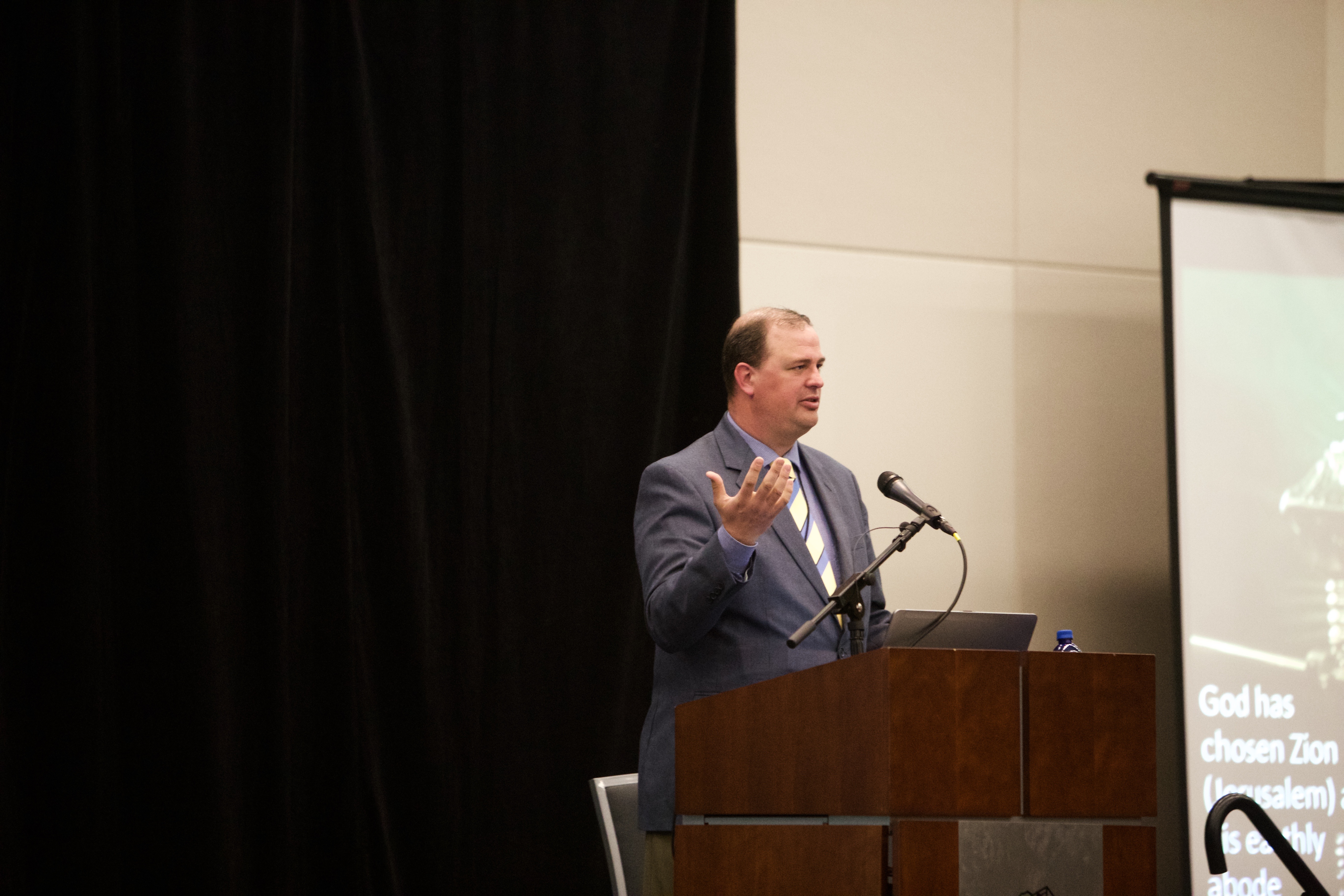
BYU professors and Book of Mormon scholars Taylor Halverson and Matt Roper recently spoke at the 14th annual Book of Mormon Archaeological Forum Conference at the Utah Valley Convention Center.
Halverson’s talk was titled “Covenant Patterns in the Old Testament and the Book of Mormon.”
“If we want to understand the Book of Mormon well, we need to understand two covenants in the Bible,” Halverson said.
Halverson spoke about the Mount Sinai covenant and the Mount Zion covenant. He said these two covenants were not understood in the 1820s and 1830s, but are discoveries that scholars have made in the last 50 to 80 years.
The first covenant Halverson spoke about was the Mount Zion covenant, also known as the unconditional covenant, or Zion theology.
“The core of this Zion theology is that if God is there in his temple, the people will always be protected,” Halverson said.
There were no stipulations or conditions in this covenant, according to Halverson.
“Laman and Lemuel were more Zion theology,” Halverson said. “It’s no wonder Nephi wrote, ‘Woe unto those who say, ‘All is well in Zion!'”
The second covenant Halverson addresses, the Mount Sinai covenant, is also known as the conditional covenant.
Halverson drew parallels between the experiences of Lehi, Nephi and Moses. He said Lehi seeing a pillar of fire was similar to Moses’s experiences with the burning bush and the pillar of fire God sent to aid the Israelites in crossing the Red Sea. Nephi himself refers back to Moses in 1 Nephi 4:2 when he said, “. . . let us be strong like unto Moses.”
“In this covenant, Moses is the ideal human figure,” Halverson said. “The Mosaic covenant had a power for shaping the theology and culture Nephi brought to the new world.”
Halverson said the core of the conditional covenant was a phrase frequently written in the Book of Mormon: “If ye keep my commandments ye shall prosper in the land.”
He concluded by saying the conditional covenant, the covenant at Mount Sinai, is much more in line with LDS belief.
“We must understand the covenant at Sinai if we are to understand the Book of Mormon,” Halverson said.

In his presentation, “Howlers in the Book of Mormon Revisited,” Roper defined howlers as “things that were once laughed at which have since been proven true.”
“‘The Book of Mormon is tough; it thrives on investigation; you may kick it around like a football, as many have done; and I promise you it will wear you out long before you ever make a dent in it,'” Roper said, quoting a talk by scholar Hugh Nibley.
Roper provided examples of “howler” evidence in the Book of Mormon. He cited critics’ statements and how they have been answered by Book of Mormon scholars and historians.
The first example Roper gave was a criticism of the names in the Book of Mormon.
“For many years, critics of the Book of Mormon discussed the names found in the Book of Mormon as modern in origin,” Roper said. “In recent decades, however, we have benefited from the work of some Latter-day Saint scholars trained in Semitic languages.”
Critics have especially questioned the name of Nephi, saying it is a name that “is not very likely.”
However, Roper said Nephi is an Egyptian man’s name, according to scholars. The name “Nephi” means good, fine, goodly, beautiful or fair.
Another theory critics have is the people of Jerusalem couldn’t have known about steel so early in history, and yet Laban’s sword was made of steel.
Roper countered that criticism with a recent discovery. Archaeologists found a steel sword at Jericho that was a meter long. The sword is now on display in the Israeli museum in Jerusalem.
Critics of the Book of Mormon also say there is no evidence for the destruction of the Americas when Christ was crucified.
Roper offered archaeologists’, geologists’ and historians’ studies to disprove this theory. One such study was published in BYU studies in 1997, “In the Thirty and Fourth Year” by BYU geologist Bart Kowallis.




